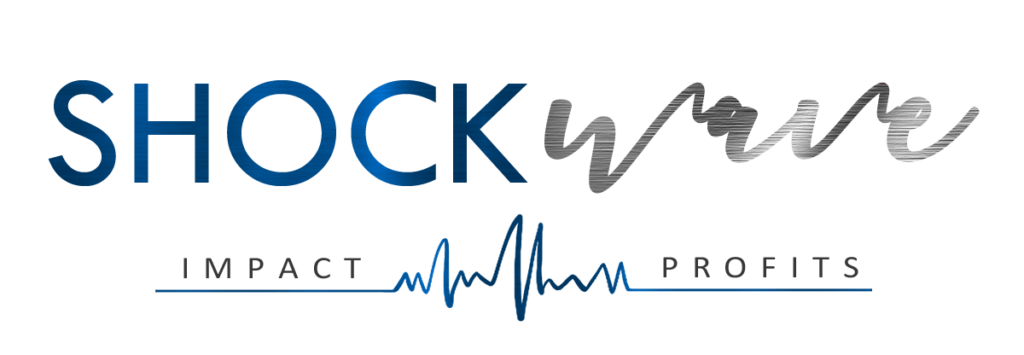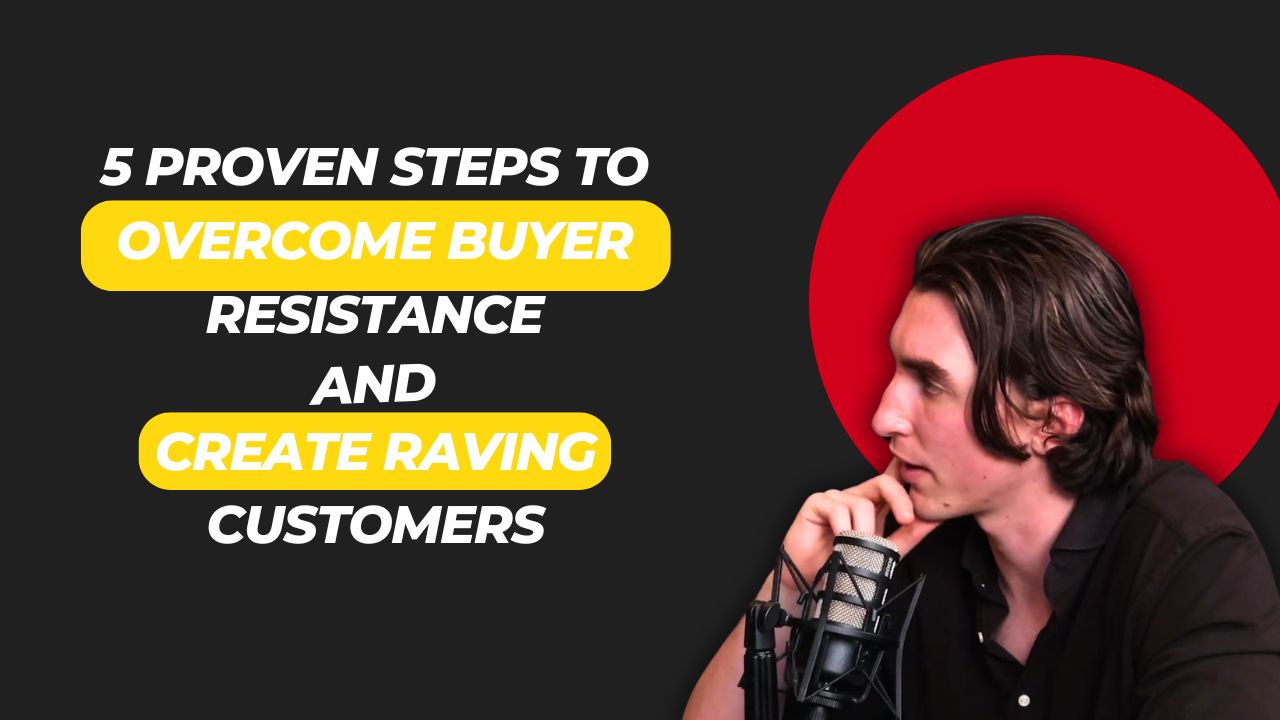Let’s kill the myth once and for all:
People don’t say “no” because of price. Or timing. Or because they’re “thinking about it.”
Those are smoke signals. The real fire? Buyer resistance that you failed to address.
It’s not that they don’t want what you’re selling. It’s that you haven’t earned the internal YES that moves them forward.
This is where most entrepreneurs and marketers fall flat. They build a solid offer. They slap on some urgency. They run ads and wonder why people click and bail.
But if you’re serious about scaling, you need more than a pitch.
You need a resistance-flipping framework that makes the sale inevitable.
That’s exactly what we unpacked in this Special Ops Podcast with Nick Verge: a conversion copywriting and sales psychology expert who’s helped build million-dollar funnels across ecom, info, and agency offers.
Here’s the 5-step playbook we outlined to take your prospects from skeptical browsers to confident buyers.
And if you want to hear the full breakdown in action, listen to the full episode here.
Step 1: Identify the Real Reason They’re Not Buying
Let’s be honest: most businesses are out here treating symptoms instead of curing the disease.
They think their offer needs more urgency. Better graphics. More “scarcity.”
But all of that is lipstick on a funnel that hasn’t addressed the core resistance.
Nick dropped the first and most important tactic:
Ask your customers what almost made them say no.
This single question will uncover the real fears, hesitations, and stories playing in your prospect’s mind…the ones your current copy is ignoring.
Here’s how to do it:
- Interview recent buyers and ask: “What almost stopped you from buying?”
- Survey leads who didn’t convert and ask: “What held you back?”
- Dig into Amazon reviews, Reddit threads, YouTube comments, any platform where your audience vents in raw, emotional language
You’ll uncover gold like:
- “I’ve bought stuff like this before and it didn’t work”
- “It felt too good to be true”
- “I just wasn’t sure if it would work for me”
Now you’re armed with real objections. Not guesswork.
And once you know the resistance, you can dismantle it…piece by piece.
Step 2: Preempt Objections Before They Come Up
Average marketers react to objections. Elite marketers prevent them.
That’s the difference between reactive copy and persuasive strategy. Your job is not to argue or defend. It’s to make your prospect feel like you’ve already answered the question they were too afraid to ask out loud.
Here’s what this looks like in practice:
Let’s say you’re selling a mastermind program and you keep hearing the same objection: “I’m not sure I’ll actually follow through.”
Instead of waiting for that to come up on a sales call, you bake the answer into your VSL and landing page:
“If you’ve joined programs before and fell off halfway through, you’re not alone. That’s why we built this with weekly accountability, check-ins, and a private coaching pod to make ghosting impossible.”
No resistance. No pushback. Just clarity.
Nick compares this to being a lawyer in a courtroom. You already know the arguments the jury is thinking. So you walk them through it, logically, calmly, and in advance until they have nothing left to object to.
Use this format:
- Identify top 3–5 objections
- Write one clear line of copy that addresses each objection before the pitch
- Validate their concern, then explain how your offer solves it
This isn’t just smart marketing. It’s empathy. And that builds trust faster than any discount ever could.
Step 3: Use Testimonials That Do the Selling For You
Let’s talk about what actually creates belief.
It’s not features.
It’s not guarantees.
It’s seeing someone just like you win with the exact product you’re hesitating to buy.
But here’s the part most people screw up: their testimonials are too polished, too perfect, and too obviously staged.
Nick dropped a blunt truth here:
If your testimonial has you in the frame nodding along, it’s not proof. It’s pressure.
What works is raw, authentic social proof from a buyer speaking directly to your next customer. It should feel unscripted. Honest. Like something they posted on their own out of gratitude.
What to aim for:
- Include struggle: “I was skeptical because I’d failed before…”
- Include a believable timeline: “It took me three weeks before I saw results…”
- Include transformation: “Now I finally feel in control again…”
You can also rotate different types of proof depending on your market:
- Product outcome: what they achieved
- Identity alignment: who they became
- Emotional resonance: how they feel now
The more your testimonials sound like the voice inside your buyer’s head, the harder they’ll hit.
Step 4: Build Urgency Without Fake Scarcity
This is where 90 percent of funnels lose all credibility.
Fake countdown timers. “Only 3 spots left” pop-ups. Artificial pressure that feels like it was copied from a 2012 launch formula.
Here’s the problem: your best buyers…the smart, serious ones…see right through it.
And when they do, they stop trusting everything else you’re saying.
Urgency works. But only when it’s earned.
So instead of faking it, do this:
Clarify the consequences of inaction.
Nick explained it perfectly:
“Urgency isn’t about rushing people. It’s about explaining what’s at stake if they don’t move.”
For example:
- “If you wait six more months, your competitors will be six months ahead.”
- “Every week you delay, you’re leaving clients and cash on the table.”
- “AI is not slowing down. Either you adapt or get left behind.”
Real urgency doesn’t need a flashing timer. It needs a mirror.
Show them what staying stuck looks like. Then give them the decision.
This creates internal drive, not external force. And that’s the kind that sticks.
Step 5: Future Pace With Emotional Precision
Last but not even close to least: future pacing.
This is how you anchor belief. You’re not just telling them what the product does. You’re showing them what life will feel like once they say yes.
And here’s the key: specificity.
Vague promises like “you’ll feel better” or “you’ll make more money” don’t move people. But hyper-specific, emotionally charged visions of what’s waiting on the other side? That hits.
Here’s Nick’s technique in action:
“Picture this. Six months from now, you log in to your Stripe account and see a $102,000 month. You smile, not because of the number, but because you know it came from a system you own. You remember the moment you clicked that button and how it changed everything.”
Then flip it:
“Now imagine the opposite. You don’t take action. Six months go by. Same revenue. Same problems. Same doubt. And you wonder what would’ve happened if you just bet on yourself.”
This is not storytelling. It’s programming.
You are programming the decision they’ll later credit as the turning point in their success.
Future pacing puts your offer in context of their actual life. It makes the decision real, not abstract.
And when someone sees themselves winning before they buy, the sale is already closed.
Final Word: Buyer Resistance Is a Symptom of Misalignment
Every no you get is a signal.
It’s telling you where your message doesn’t match your market.
Where your offer isn’t speaking to the emotions, doubts, and beliefs that shape real decisions.
The good news? You don’t need to be manipulative or aggressive to fix it.
You just need to follow the playbook:
- Get clear on the real hesitation
- Address it before it becomes a barrier
- Show real people getting real results
- Use urgency that’s actually honest
Paint the future they want and then bring them back to the decision they need to make
Do that, and resistance stops being an obstacle.
It becomes fuel.
👉 Want the cheat sheet Nick mentioned? Grab it from the Visionary Vault here
👉 Download Nick Verge’s Copywriting Guide: https://www.nickverge.com/gigadoc
👉 Want to hear the full convo? Listen to the full podcast episode with Nick Verge
You don’t need to convince more.
You need to align deeper.
That’s how skeptics become raving customers.

